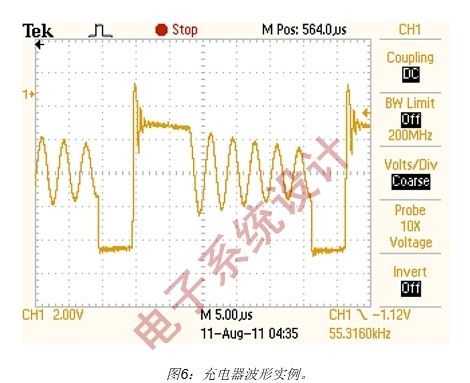How to solve the electromagnetic interference prob
Category:Technical News Source:Hongjia United Views:5755 Date:2016/1/5Charger interference
Another potential source of touch screen interference is the switching power supply of mobile phone charger. The interference is coupled to the touch screen through fingers, as shown in Figure 5. Small mobile phone chargers usually have AC power live line and zero line input, but there is no ground connection. The charger is safely isolated, so there is no DC connection between the power input and the charger secondary coil. However, this will still produce capacitive coupling through the switching power supply isolation transformer. The charger interference forms a return path by touching the screen with a finger.

Note: in this case, charger interference refers to the applied voltage of the equipment relative to the ground. This interference may be described as "common mode" interference because it is equivalent to DC power supply and DC ground. If the power switching noise generated between the DC power supply output by the charger and the DC ground is not fully filtered, it may affect the normal operation of the touch screen. This power rejection ratio (PSRR) problem is another problem, which will not be discussed in this paper.
Charger coupling impedance
The charger switch interferes with the leakage capacitance through the primary secondary winding of the transformer (about 20pF) coupling. This weak capacitive coupling can be compensated by the parasitic shunt capacitance that appears in the charger cable and the power receiving device itself. When the device is picked up, the shunt capacitance will increase, which is usually enough to eliminate the charger switching interference and avoid the interference affecting the touch operation. When the portable device is connected to the charger and placed on the desktop, and the device is operated When a person's fingers only touch the touch screen, there will be a worst-case interference generated by the charger.
Switching interference component of charger
Typical mobile phone charger adopts flyback type (flyback) circuit topology. The interference waveform generated by this charger is complex and varies greatly with the charger. It depends on the circuit details and output voltage control strategy. The interference amplitude also varies greatly, depending on the design effort and unit cost invested by the manufacturer in the shielding of switching transformer. Typical parameters include:
Waveform: including complex pulse width modulation square wave and LC ringing waveform. Frequency: 40 ~ 150kHz under rated load. When the load is very light, the pulse frequency or skip cycle operation drops below 2KHz. Voltage: up to half of the peak voltage of the power supply = VRMs / √ 2.
Interference component of charger power supply
At the front end of the charger, the AC power supply voltage is rectified to generate the high voltage rail of the charger. In this way, the switching voltage component of the charger is superimposed on the sine wave of half of the power supply voltage. Similar to switching interference, this power supply voltage is also coupled through switching isolation transformer. At 50Hz or 60Hz, the frequency of this component is much lower than the switching frequency, so its effective coupling impedance is correspondingly higher. The severity of power supply voltage interference depends on the characteristics of parallel impedance to ground and the sensitivity of touch screen controller to low frequency.

Special case of power interference: 3-hole plug without grounding
Higher rated power adapter (e.g. laptop AC adapter), a 3-hole AC power plug may be configured. In order to suppress the EMI at the output end, the charger may internally connect the ground pin of the main power supply to the DC ground of the output. This kind of charger usually connects a Y capacitor between the live line and the zero line and the ground, so as to suppress the conducted EMI from the power line. Assuming that the ground connection exists intentionally, this kind of adaptation The device will not interfere with portable touch screen devices connected to power supply PC and USB. The dashed box in Figure 5 illustrates this configuration.
For PC and its USB connected portable touch screen device, if the PC charger with 3-hole power input is inserted into the power socket without ground connection, a special case of charger interference will occur. The Y capacitor couples the AC power supply to the DC ground output. A relatively large y capacitance value can very effectively couple the power supply voltage, which makes the larger power frequency voltage coupled with a relatively low impedance through the fingers on the touch screen.


